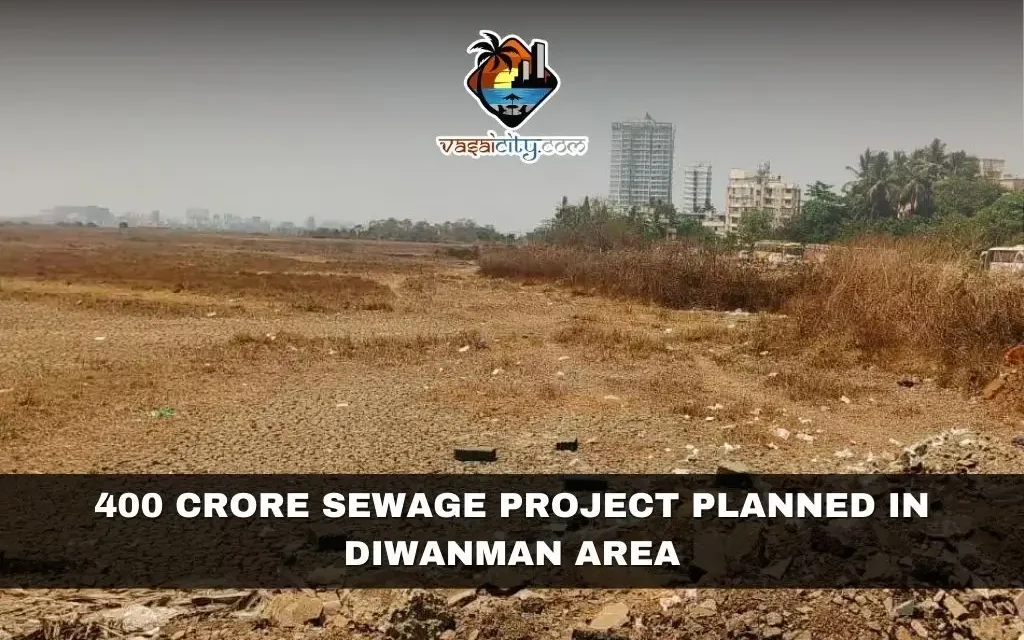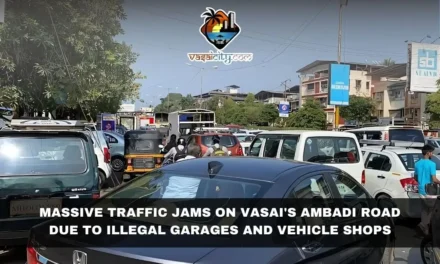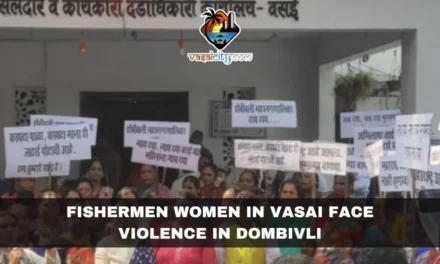The Vasai-Virar Municipal Corporation (VVMC) is taking a major step to tackle the growing sewage issues in the region by proposing a new sewage treatment plant (STP) in Diwanman. The planned facility will come up along the 100-feet road, on a plot that was earlier reserved for a municipal vehicle depot and a water storage tank (MBR).
This new sewage project is estimated to cost ₹400 crore and will have the capacity to treat 47 to 48 million liters of wastewater every day. The decision to reallocate this land and build a much-needed sewage treatment plant comes in the wake of mounting pressure to address the city’s sanitation needs.
Why This Project Matters
The Vasai-Virar area is facing an increasing sewage management problem. Every day, the city generates about 156.28 million liters of sewage, which needs to be processed before it can be released into the sea or creeks. Currently, there’s only one fully functional sewage treatment plant in Bolinj, Virar. Given the city’s growing population and rapid urban development, this is far from sufficient.
To address this, the municipal corporation has proposed setting up sewage treatment plants in seven different zones of the city. Out of these, two are planned in Nalasopara, two in Navghar-Manikpur, and one in Vasai. In fact, construction for a second plant in Nalasopara East was recently inaugurated, with an estimated cost of ₹431 crore.
The latest addition to this list is the proposed STP in Diwanman, under Zone 6, which covers the Navghar-Manikpur area.

Where Is This New Plant Coming Up?
The plant is planned for Survey No. 176 in Diwanman, near the 100-feet road and just behind the current tempo stand. This piece of land was earlier reserved by the municipal corporation for two specific purposes:
- A vehicle depot for its fleet.
- A balancing reservoir (MBR) for water supply management.
But with the pressing need for sewage infrastructure, both of these reservations have now been cancelled, and the land has been reallocated for the new STP project.
This change in land use has been made official through a notification published in the state government’s gazette, under Section 37(1) of the Maharashtra Regional and Town Planning Act, 1966.
What Will This Plant Do?
The sewage treatment plant planned at Diwanman will occupy 35,033 square meters of land and will have the capacity to treat 48 million liters of wastewater every day.
Once operational, it will collect and process the sewage generated in the Navghar-Manikpur region before discharging the treated water into nearby creeks, as per environmental guidelines. The plant is expected to play a critical role in improving sanitation, reducing pollution, and protecting the local ecosystem.
All technical hurdles for setting up the plant have reportedly been cleared.
Funding the Project
The total cost of the Diwanman STP is pegged at ₹400 crore. The funding breakdown is as follows:
- 25% from the central government
- 45% from the state government
- 30% from the municipal corporation’s own funds
This joint funding model will help ensure timely execution without placing an excessive burden on any one authority.
Why Change the Land Reservation?
Changing the land reservation wasn’t a simple task. It involved coordination between multiple departments within the municipal corporation. The Water Supply Department was the one to initiate the suggestion to reserve land for a sewage plant. Following that, the Town Planning Department made the necessary amendments.
Speaking about the decision, Y.S. Reddy, Director of the Town Planning Department at VVMC, said:
“The land was originally reserved for a vehicle depot and a balancing reservoir. But based on the instructions from the Water Supply Department, we modified the reservation to make space for the sewage plant. Executing the STP project itself isn’t in our department’s hands, but we made the required changes for it to proceed.”
This highlights the kind of inter-departmental cooperation necessary for such large infrastructure projects to move forward.
What About the Cancelled Vehicle Depot and Reservoir?
One obvious question is what happens now that the land reserved for a vehicle depot and balancing reservoir has been reassigned.
As of now, the municipal corporation has not specified alternate locations for these facilities. However, it is likely that they will look for other suitable sites to ensure these services are not affected in the long run.
Water supply management and municipal fleet operations are both important, and while the sewage issue has taken priority, the corporation will need to find a way to address the other needs as well.
A Step Towards Cleaner Living
This project in Diwanman is a clear indication that the Vasai-Virar Municipal Corporation is beginning to prioritize long-term solutions to its growing infrastructure needs. With urban expansion happening at a rapid pace, the demand for proper sewage treatment facilities is more pressing than ever.
Once completed, the Diwanman sewage plant will not only reduce pollution but also improve the overall quality of life for residents in Navghar-Manikpur and nearby areas. It will also reduce the load on the existing facility in Bolinj, and contribute towards a more sustainable and cleaner urban environment.
In Conclusion
The decision to set up a ₹400 crore sewage treatment plant in Diwanman, even at the cost of changing previous land use plans, shows the shifting focus of urban planning in Vasai-Virar. From transportation and water storage to sanitation, priorities are being re-evaluated to meet the city’s most urgent needs.
As the city grows, projects like this one are going to be crucial for ensuring that basic services keep up with the population. Residents, environmentalists, and civic bodies alike will be keeping a close watch as the project moves forward.














